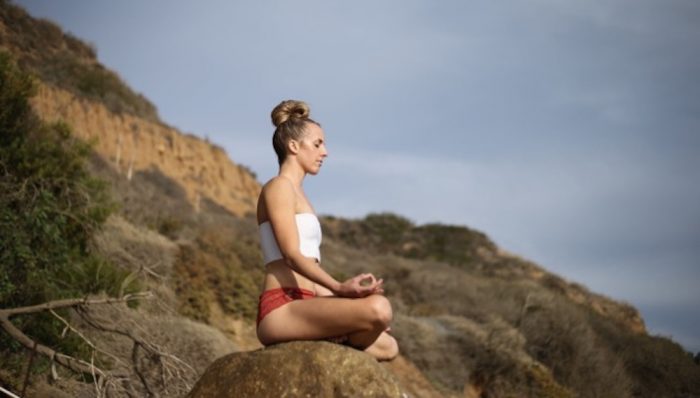How do we move in a restorative way?
Our anatomic knowledge is an amalgamation of newer scientific studies in fascia, the psoas, and energy, and older solidified ideas about muscles bones and tendons.
When we move, we are utilizing creative visualization and other are ancient wisdoms—sometimes without even knowing it.
Movement is medicine.
This article lays the foundations of a few questions or approaches that may help you connect deeper to yourself in practices like yoga and Pilates and become more present in your body throughout the day.
These ideas are here to simply deepen your internal map of the body—and I invite you to experiment.
We all understand our bodies in our own unique way, and regardless of where we are on the spectrum of all these different schools of thought, every body needs movement. Our bodies were made to move.
If at first, the idea doesn’t seem obvious in the body, know that this is a seed planted. As we continue to ask questions and learn, the ideas integrate, and your connection will naturally deepen. Feeling or sensing into and engaging is a different request to “knowing” something. It is a state and action in the body awareness, not just our minds.
On the same note, just because we don’t “know” something doesn’t mean you’re not moving in a way that is beneficial to the system. Sometimes the understanding comes later, or transforms, but the movement has benefits, regardless.
The key to moving in a therapeutic way is to slow things down, connect to the breath as we move, and allow the body space to find the new pathways we are trying to create. Gentle repetition allows us to continue to integrate this new way of moving into our daily activities.
1) Breathe
The way we breathe can inform the tone of the movement. A soft “ha” exhale from the mouth can soften the sternum; a short, quick “sniff” inhale through the nose can invigorate the body; and a strong “ho” sound, like in martial arts, can help the body be tense, and gain power.
Take the time to breathe, however it works best from the body’s natural state (i.e., sometimes our breathe is short and needs more time to get deeper). Allow the transition. Allow yourself to invoke the “rest and digest,” parasympathetic nervous system, where the body has resources to heal itself.
2) Sensing and Feeling
We want to observe the sensations of the movement, so we can gently guide our awareness into the more subtle place we want to connect. This is how we allow ourselves to intensify the “feeling” of the movement, as opposed to “performing or doing” the movement.
3) Non-Judgment and Curiosity
Try not judge how you move. Just observe what arises for you, and try not to judge where you are in your journey of understanding your body. These movements are all beneficial and will continue to evolve with you as you progress. Keep exploring and stay curious, even when the body might not be feeling its most vigorous. This is when we need this work the most.
4) Yield and Soften
There is a yield, or a release, or a softening that happens, before we initiate our movement. This allows our awareness to flow to the area we are engaging, time to breathe, and time to stay clear in the intent of our movement. This is where we let go of the holding patterns, or where we de-armor our muscles, to find something a little more subtle in the body.
Sometimes, the subtle movements are the ones that make us the strongest, so allow yourself to explore different ways of connecting to the movements, and strengthen your connection to the mind and the body through feeling and moving.
Sometimes this is simpler than we think: to stay in a soft, focused way of moving the body.
Clients often say they feel they are moving fluidly, or it feels more instinctual because the body seems to be finding the ease on its own. The mind often wants to domineer our patterns, and we all know the mind can love complex thinking. Allow yourself to stay in your body.
It is normal to feel a little unsure, or resistant at times, as we are encouraging you to create new patterns in the neural system, where our minds often prefer their well-established entrainments. This is the process of how the body changes; the confusion is often a sign of old patterns falling away.
Keep moving with non-judgment, keep asking questions about the body as you move, and keep that “learning switch” engaged. Enjoy the process.
Come back to these ideas in a few months, and see how your understanding of these principles has evolved.









Read 1 comment and reply